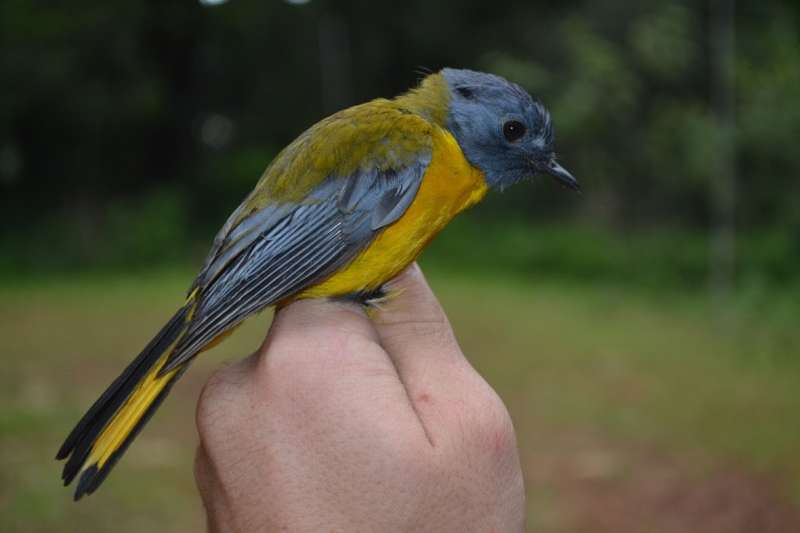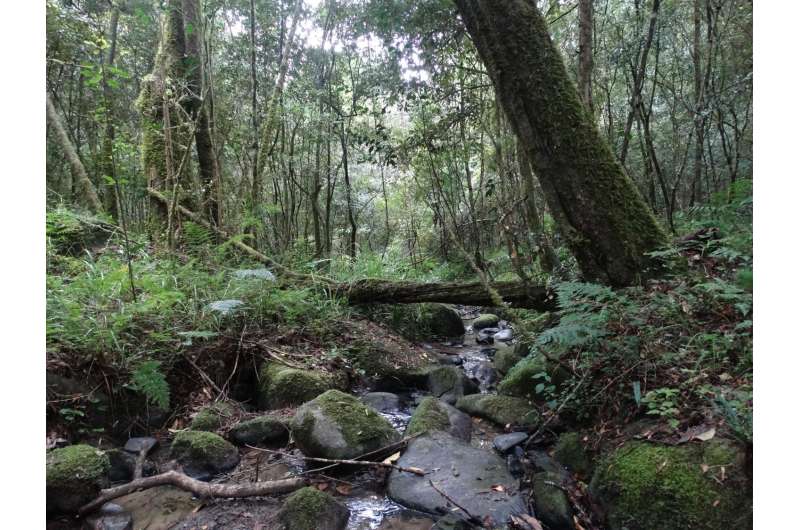Researchers investigate decline in South Africa's forest-birds

Forest-dwelling bird species are disappearing from some of South Africa's indigenous forests, with forest birds in the Eastern Cape being the most affected.
A new study, published in Bird Conservation International recently, showed that the ranges of 28 of South Africa's 57 forest-dwelling bird species were declining, while those of 22 species were increasing and seven remained stable.
The findings are based on 25 years of citizen science data collected by the Southern African Bird Atlas Project. The data can be used to indicate the conservation status of a species, depending on its known range and how it is changing. The first survey took place from 1987 to 1992, and the second survey started in 2007 and is ongoing.
Researchers from Stellenbosch University (SU) and South Africa's Department of Environmental Affairs used data on 57 forest-dwelling species to investigate links between deforestation, species characteristics and range declines for these species over the last 20 years.
Indigenous forests make up less than one percent of South Africa's landscape, but are home to some 14% of our terrestrial birds, many of which are endemic or range-restricted. But these forest patches are highly fragmented, with most remaining forests being smaller than 1 km2.
Prof. Michael Cherry, a behavioural ecologist from SU and one of the co-authors, says they are particularly concerned about the disappearance of forest birds from indigenous forests in the Eastern Cape, and especially the former homelands of the Ciskei and Transkei. These areas form part of the Maputaland-Pondoland-Albany Biodiversity Hotspot.
"Based on the data from the Atlas, we know that some bird species have disappeared from these forests. But we do not know whether this implies a decline in population or whether they are simply moving somewhere else" he says.
"When a forest is destroyed or becomes degraded, the bigger and stronger bird species can fly elsewhere to find food and refuge. But smaller bird species could be stuck if there is not another forest patch within range."

Often plantations of alien trees, usually pine or gum, are closely associated with indigenous forests. These trees are planted so that they can be harvested either for timber or for pulp.
He says while some forest-bird species are able to benefit from plantations, others, such as the Bush Blackcap, the Yellow-throated Woodland-warbler and the Orange Ground-thrush, were lost from areas where plantations increased.
"Plantations are unsuitable habitats for these species as they build nests in the understory of indigenous forest, which is vulnerable to trampling if cattle are allowed to graze there. This is often the case, as forests are not usually fenced unless they fall within park boundaries," he explains.
Currently Prof. Cherry leads a major research project, funded by the Foundational Biodiversity Information Programme, that will try to ground-truth the results of this study in the forests of the Eastern Cape. Research partners include four South African universities and six museums, as well as Harvard University in the United States of America.
During 2016 and 2017 the group has already undertaken three field trips to the Amathole and Transkei mistbelt forests and the Pondoland scarp forests, and another three field trips are in the pipeline. They are working not only on birds, but other animal groups as well.
"We predict that if birds - perhaps the most mobile of animal taxa as they are able to fly relatively long distances between forest fragments - are being negatively affected by forest degradation, then other animal species are likely to be worse affected", he says.
Indigenous forests are not only threatened by deforestation. Forests are also under pressure from rural communities who collect forest products for firewood, building materials, food and traditional medicines. "If humans and birds are targeting the same tree species as resources, then the quality of these resources declines for both," warns Cherry.
"The challenge is to develop a forest management policy which minimizes forest degradation to the benefit of both humans and birds," he concludes.
More information: TESSA J. G. COOPER et al, Atlas data indicate forest dependent bird species declines in South Africa, Bird Conservation International (2017). DOI: 10.1017/S095927091600040X
Provided by Stellenbosch University


















